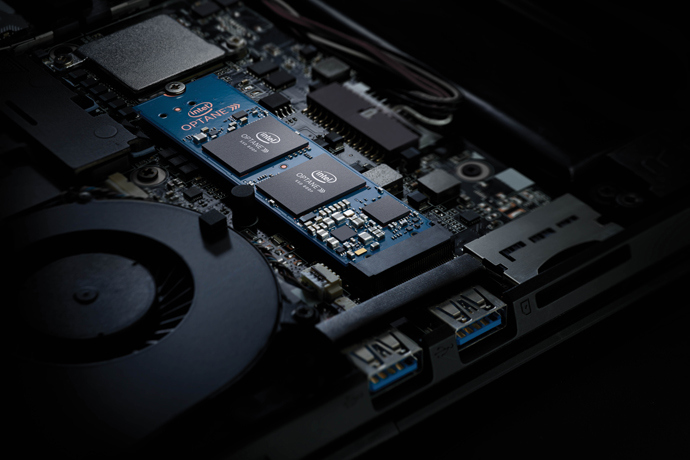A superfast Surface Book, or Apple Macbook beyond your wildest dreams courtesy of Intel new SSD, but there is a catch

What’s the single biggest problem with SSDs, right now?
Price is an easy guess, although prices are coming down for the fast and reliable storage technology that has taken mobile and desktop systems by storm.
Storage size limitations, albeit expanding exponentially, would be the right answer, especially in the case of laptops, and tablets that run the desktop version of Windows 10, but even if we are getting warm, the actual answer is a combination of two factors: size and speed.
SSD is fast, but it’s not “lightning” fast, in a sense that we are still far from being able to boot up a full size desktop PC instantly, as we would a smartphone or a tablet, even with a full array of SSDs, and not a single spinning drive in sight. Also, the bigger the drive, the slower things get, although still pretty darn fast compared to the fastest spinning drive available.
To make a SSD drive truly superfast, the technology must move forward towards shrinking memory chip sizes dramatically, and making them “3D”, in a similar way as Intel’s own 3D Xpoint memory, which uses stacked wafers that interact with each other directly, through vertical endpoints, and avoid the data bottleneck created by funneling all information through a small number of peripheral connectors, as it happens in traditional flat circuit boards.
It goes without saying that 3D memory is still unattainably expensive, at least for the time being, and largely incompatible with systems other than Intel’s.
Mark these words: the era of lightning fast portable is coming, and Intel is getting a leg up the competition with its prand new Optane 800P SSD. The M.2 form factor is most unusual as SSDs go, but that’s what’s required to plug in your new Optane drive The connector is close in appearance to that of a RAM slot, which means that you can’t use it as an external storage drive, without an appropriate compatible interface, capable of connecting via USB or USB-C.
The reason for choosing this format is beyond obvious: Intel is not going to build a superfast SSD, only to force it to slow down by conventional wired connectors.
On an M.2 compatible system, the Optane 800P has been tested as capable of 1450MB/s sequential write speed, and 640MB/s random read speed.
The Optane is also guaranteed for five years, from the manufacturer, and sports a 365TB endurance.
Great specs, isn’t it? Well, you haven’t read the best (or worst) part yet: spending between $129 and $199 will get you between 59GB, and 118GB. That’s it. Talk about a “Wah-Wha-Whahhh...” moment!
In Intel’s defense, the speed provided by these drives, truly is staggering, and the size is enough for the operating system and most apps, which means that booting up and using apps on a PC where the main drive is an Optane 800P, is basically as instantaneous as a smartphone. By the numbers, regular SSD is about three times slower than an Optane 800P.
Ready to shop?
PortableOne has the best deals on Microsoft Surface Book laptops, and more powerful devices for work and downtime.